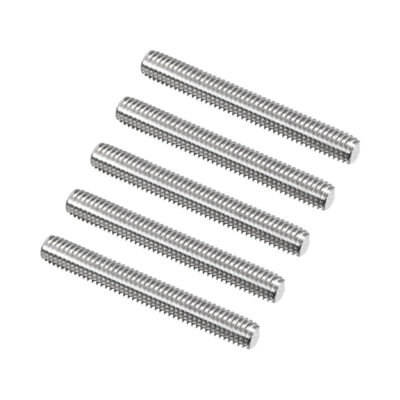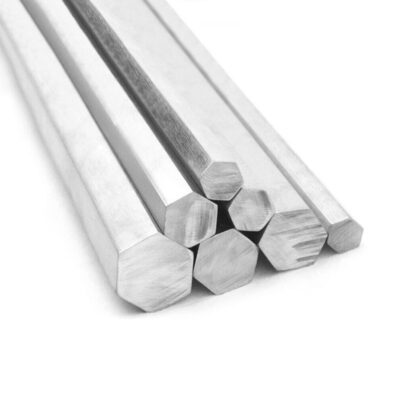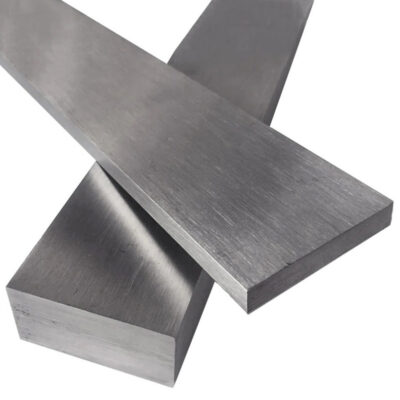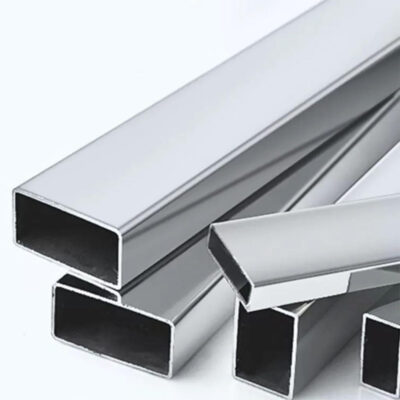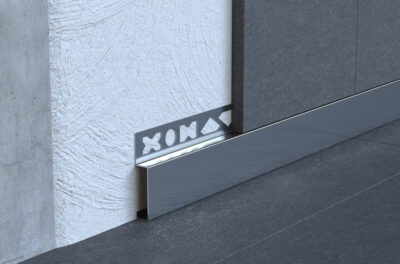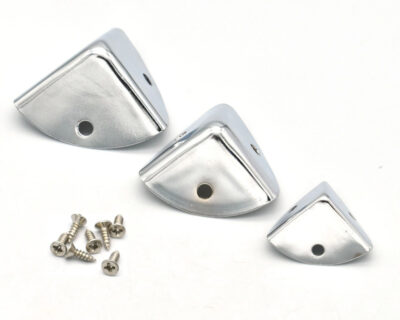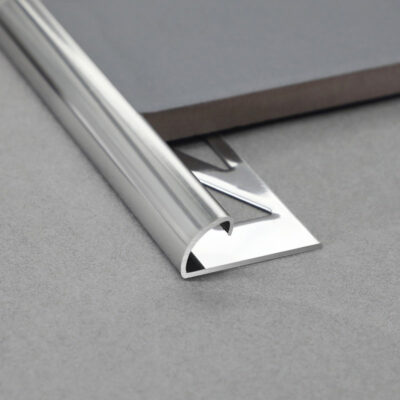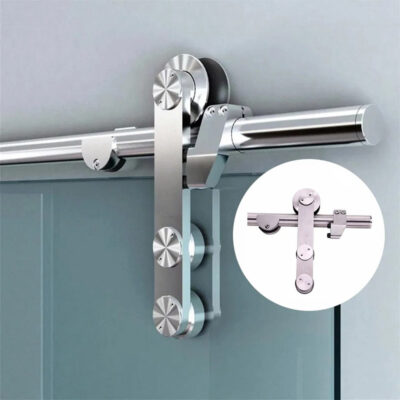The Complete Guide to Stainless Steel Certifications
The manufacturing world runs on certification. Behind every stainless steel component in the medical device keeping someone alive, the bridge supporting thousands of commuters, or the food processing equipment preparing your meals, lies a complex web of certifications verifying its properties and performance. I recently toured a stainless steel manufacturing facility where an entire department existed solely to manage certifications—a testament to their critical importance.
Stainless steel certifications serve as the unspoken language of quality assurance in global trade. They transform subjective claims about material properties into objective, verifiable standards. Without them, we’d face a chaotic marketplace where buyers couldn’t confidently select materials for critical applications and manufacturers couldn’t effectively communicate their products’ capabilities.
The certification landscape can be bewildering even for industry veterans. During a recent project sourcing specialized stainless steel for a chemical processing application, our team spent weeks navigating conflicting certification requirements across different jurisdictions. This experience revealed how certifications simultaneously enable and complicate global commerce.
For manufacturers like E-Sang, maintaining comprehensive certifications isn’t merely about compliance—it’s about opening markets and building trust with customers who rely on certified materials for safety-critical applications. These formal validations ensure that stainless steel meets specific composition, mechanical, and performance requirements necessary for its intended use.
International Standards and Testing Organizations
The foundation of stainless steel certification rests on standards developed by several key international organizations. These standards provide the frameworks against which materials are tested and certified.
ASTM International (formerly the American Society for Testing and Materials) maintains hundreds of standards specific to stainless steel. The most frequently referenced include ASTM A240 (flat products), A276 (bars and shapes), and A312 (pipes). These standards define chemical composition limits, mechanical property requirements, and testing methodologies.
A metallurgical engineer I consulted, Dr. Melissa Chen, explained: “ASTM standards are living documents, continuously revised to reflect technological advancements and market needs. Committee members—representing producers, users, and general interest groups—meet regularly to update these standards, ensuring they remain relevant.”
ISO (International Organization for Standardization) approaches certification differently. Rather than defining material specifications directly, ISO develops standards for testing methods and quality management systems. ISO 6892, for example, standardizes tensile testing methods, while ISO 9001 certifies that a manufacturer follows quality management best practices.
European standards (EN) and Japanese Industrial Standards (JIS) add further complexity. EN 10088 covers stainless steel flat products, while JIS G4304 and G4305 address similar materials in Japan. Chinese GB standards have also gained importance as China’s manufacturing economy has expanded.
This table illustrates key international standards relevant to common stainless steel products:
| Standard | Region | Products Covered | Key Requirements |
|---|---|---|---|
| ASTM A240/A240M | North America/Global | Sheet, plate, strip | Chemical composition, mechanical properties, corrosion resistance testing |
| EN 10088-2 | Europe | Flat products | Similar to ASTM but with different tolerances and testing methodologies |
| JIS G4304 | Japan | Hot-rolled sheet/plate | Stricter carbon limits for some grades, different testing protocols |
| ISO 15510 | Global | All forms | Chemical composition reference standard without mechanical properties |
| GB/T 3280 | China | Cold-rolled sheet/strip | Modified composition ranges, specific to Chinese production methods |
The challenge lies not just in understanding these standards individually but in recognizing how they relate to each other. Grade 304 stainless steel might be called 1.4301 in Europe or SUS304 in Japan—different designations for essentially the same material, though with subtle specification differences. I’ve witnessed procurement teams delay projects by weeks because they couldn’t properly translate between these equivalent standards.
Material Test Certifications and Documentation
When purchasing stainless steel, certification documentation proves that the material meets required specifications. The European standard EN 10204 establishes the most widely used framework for material certification documents, defining several types:
Type 2.1 certificate (Declaration of Compliance) is a simple statement that the delivered products meet the order requirements without showing test results.
Type 2.2 certificate includes the manufacturer’s test results from non-specific inspection (not necessarily from the actual material delivered).
Type 3.1 certificate contains test results from the specific batch of material delivered, validated by the manufacturer’s authorized representative.
Type 3.2 certificate includes the same information as 3.1 but is additionally verified by an independent third-party inspector or the purchaser’s representative.
During a recent discussion with Thomas Wegner, procurement director at a major medical device manufacturer, he noted: “We won’t accept anything less than 3.1 certification for components in critical applications. The liability risk is simply too great without that material-specific testing documentation.”
The most comprehensive form of material documentation is the Mill Test Report (MTR), also called a Material Certificate or Inspection Certificate. MTRs typically include:
- Material grade and applicable standard
- Heat or batch number for traceability
- Chemical composition analysis
- Mechanical property test results (yield strength, tensile strength, elongation)
- Additional testing results as required (corrosion testing, grain size, etc.)
- Heat treatment condition
- Surface finish information
Here’s an example of what typical test results might look like for 304 stainless steel sheet:
| Property | Specification Requirement | Actual Test Results | Status |
|---|---|---|---|
| Carbon | 0.08% max | 0.062% | PASS |
| Chromium | 18.0-20.0% | 18.32% | PASS |
| Nickel | 8.0-10.5% | 8.75% | PASS |
| Yield Strength | 205 MPa min | 248 MPa | PASS |
| Tensile Strength | 515 MPa min | 587 MPa | PASS |
| Elongation | 40% min | 52% | PASS |
| Intergranular Corrosion Test | No cracks | No cracks observed | PASS |
I once visited a fabrication shop where the quality manager maintained a meticulously organized filing system for these certificates—thousands of documents representing millions of dollars in material. When a customer questioned the authenticity of material in a pressure vessel, they located the original certificate within minutes, averting a potential crisis.
The certification system isn’t perfect, however. Counterfeit certificates represent a significant industry challenge. I’ve spoken with quality managers who describe sophisticated forgeries complete with legitimate-looking letterheads and signatures. This has driven many companies to implement digital verification systems where certificates include QR codes linking to manufacturer databases.
Industry-Specific Stainless Steel Certifications
Beyond general material certifications, specialized industries impose additional requirements to address their unique concerns. These industry-specific certifications often focus on performance characteristics rather than just material composition.
Food and Beverage Industry
The food and beverage industry requires stainless steel that maintains hygienic conditions. FDA compliance for food-contact surfaces is mandatory in the United States, while Europe applies EC 1935/2004 regulations. The 3-A Sanitary Standards in the dairy industry and NSF International certification establish additional requirements.
Sarah Jensen, a food processing equipment designer, explained their significance: “When we specify stainless steel for food contact applications, we’re not just looking at the material composition—we need certification that the surface finish meets specific roughness parameters to prevent bacterial adhesion. Ra values must be documented and certified.”
This extends to welding procedures and surface treatments, which must maintain the material’s corrosion resistance and cleanability. A manufacturer might supply perfectly good 316L stainless steel, but without proper certification, food processors won’t consider it.
Medical and Pharmaceutical Applications
Medical device manufacturers face perhaps the most stringent requirements. ASTM F138 and ISO 5832-1 specifically address stainless steel for surgical implants, with tight controls on inclusion content and grain structure that exceed standard industrial grades.
For pharmaceutical equipment, ASME BPE (Bioprocessing Equipment) certification has become the gold standard, establishing requirements for materials, surface finishes, and fabrication methods. These standards include detailed requirements for electropolishing, passivation, and documentation.
I once consulted on a project where a pharmaceutical manufacturer rejected $150,000 worth of custom stainless steel components because the material certificates didn’t specifically reference ASME BPE compliance—despite the material meeting all the actual technical requirements. The lesson was clear: in regulated industries, certification documentation is as important as the material properties themselves.
Marine and Offshore Applications
Stainless steel used in marine environments requires certification to standards that address specific corrosion challenges. Classification societies like DNV (Det Norske Veritas), ABS (American Bureau of Shipping), and Lloyd’s Register issue certifications for marine-grade stainless steels.
These certifications verify resistance to specific corrosion mechanisms including:
- Pitting corrosion in chloride environments
- Crevice corrosion in confined spaces
- Stress corrosion cracking under tensile stress
- Galvanic corrosion when coupled with other metals
The oil and gas industry applies additional requirements through NACE (National Association of Corrosion Engineers) standards, particularly for environments containing hydrogen sulfide. NACE MR0175/ISO 15156 certification is mandatory for materials used in sour service applications, where failure could lead to catastrophic consequences.
Environmental and Sustainability Certifications
Environmental considerations have transformed how stainless steel is certified in recent years. Sustainable building projects, carbon reduction initiatives, and ethical sourcing concerns have created demand for new types of certification.
Environmental Product Declarations (EPDs) have emerged as a primary mechanism for communicating the environmental impact of stainless steel. These third-party verified documents quantify environmental impacts throughout the product lifecycle, from raw material extraction through manufacturing and eventual recycling.
I spoke with Elena Rodriguez, sustainability director at a major architectural firm, who noted: “Our clients increasingly request EPDs for all building materials, including stainless steel. LEED v4 awards points for products with EPDs, making them valuable beyond their environmental benefits.”
Several certification systems address specific environmental attributes:
The Recycled Content Certification verifies the percentage of recycled material in stainless steel products. Most stainless steel contains significant recycled content (often 60-85%), making this certification valuable for green building projects.
Carbon footprint certification documents greenhouse gas emissions associated with production. Lower-carbon stainless steel production methods can achieve certification through programs like CarbonNeutral® or specific EPD declarations.
Responsible sourcing certifications like ResponsibleSteel™ address broader sustainability concerns including labor practices, community impacts, and biodiversity. These emerging standards evaluate the entire supply chain rather than just the material properties.
Water usage certification has gained importance in regions facing water scarcity. Some manufacturers now certify their water footprint alongside other environmental metrics.
The International Stainless Steel Forum (ISSF) has developed Sustainable Stainless Charter certification for its members, establishing minimum sustainability performance levels for responsible manufacturing.
This table summarizes key environmental certifications applicable to stainless steel:
| Certification | Focus Area | Certifying Body | Key Requirements |
|---|---|---|---|
| Environmental Product Declaration (EPD) | Overall environmental impact | Various (UL Environment, IBU, etc.) | Life cycle assessment following ISO 14025 |
| LEED v4 Materials Credits | Building materials environmental performance | U.S. Green Building Council | EPD, recycled content, regional sourcing |
| ResponsibleSteel™ | Ethical and sustainable production | ResponsibleSteel | Labor practices, emissions, community impact |
| SCS Recycled Content | Verified recycled percentage | SCS Global Services | Documentation of pre/post-consumer content |
| Carbon Trust Standard | Carbon footprint reduction | Carbon Trust | Verified emissions reduction over time |
Quality Management System Certifications for Manufacturers
While material-specific certificates verify the properties of the stainless steel itself, quality management system (QMS) certifications evaluate the processes used to create it. These certifications provide assurance that manufacturers consistently produce materials meeting required specifications.
ISO 9001 represents the foundation of quality management certification. It establishes requirements for a QMS focused on customer satisfaction and continuous improvement. For stainless steel manufacturers, ISO 9001 certification demonstrates a systematic approach to quality throughout production.
During a tour of a stainless steel mill last year, the quality manager explained: “Our ISO 9001 certification isn’t just a certificate on the wall—it’s embedded in everything we do. Every process has defined parameters, measurement methods, and corrective action procedures when things go wrong.”
Industry-specific QMS certifications build upon ISO 9001 for specialized applications:
IATF 16949 certification applies to automotive supply chains. Stainless steel producers serving automotive manufacturers must typically achieve this certification, which adds requirements for defect prevention, reduction of variation, and supply chain management.
AS9100 certification addresses aerospace applications, where material failure could have catastrophic consequences. This standard imposes rigorous requirements for traceability, risk management, and configuration control beyond ISO 9001.
API Q1 certification from the American Petroleum Institute specifically addresses oil and gas industry requirements. Stainless steel destined for critical oil and gas applications typically requires manufacturers to hold this certification.
I’ve observed that stainless steel purchasers increasingly view QMS certifications as complementary to material-specific certifications. A manufacturer with strong QMS certification inspires confidence that their material certifications are reliable and their production processes consistently produce compliant material.
The relationship between QMS certification and material certification became clear during a supplier audit I attended. The auditor spent minimal time examining actual product testing, instead focusing on the systems ensuring that testing was performed correctly, results were accurately recorded, and non-conforming material couldn’t enter the supply chain.
The effectiveness of these systems explains why many purchasers prefer materials from ISO 9001 certified sources even when the material certification itself appears identical to that from non-certified sources. The QMS certification provides assurance that the manufacturer’s processes will consistently produce material meeting the specified requirements.
Navigating Certification Challenges
Despite their clear value, stainless steel certifications present significant challenges for both manufacturers and users. Understanding these challenges is essential for effectively navigating the certification landscape.
Cost Implications
Certification processes impose substantial costs throughout the supply chain. Testing equipment, trained personnel, documentation systems, and third-party verification all require significant investment. For specialized certifications, costs can be prohibitive for smaller manufacturers.
During a panel discussion on supply chain challenges, Michael Henderson, CEO of a mid-sized stainless fabricator, shared this perspective: “We recently calculated that certification-related activities consume about 4.3% of our revenue. That’s before considering the indirect costs of longer lead times and inventory management complexity.”
These costs inevitably transfer to purchasers, creating a premium for certified materials. For some applications, this premium represents an essential investment in safety and quality. For others, it may be unnecessary overhead. The challenge lies in determining which certifications truly add value for specific applications.
Global Market Fragmentation
Despite efforts toward harmonization, certification requirements vary significantly across global markets. Material accepted without question in one jurisdiction may face extensive additional testing requirements in another.
A procurement manager for an international manufacturer described her experience: “We’re building identical equipment in plants across three continents. In theory, we use the same stainless steel specification globally, but in practice, each region requires different certifications, creating inventory management nightmares and complicating our supplier relationships.”
This fragmentation particularly impacts globally distributed supply chains. A manufacturer might source stainless steel from multiple suppliers worldwide, requiring careful management of different certification standards while maintaining consistent end-product quality.
Supply Chain Traceability
Maintaining certification integrity throughout complex supply chains presents another significant challenge. As material passes through distributors, processors, and fabricators, ensuring that certification documentation remains accurately linked to the physical material requires robust systems.
I witnessed this challenge firsthand when investigating material certification discrepancies at a fabrication shop. Material that arrived properly certified was cut, processed, and restocked without maintaining clear connections to its original certification. When customers requested documentation, reconstructing the certification chain proved nearly impossible.
The International Stainless Steel Forum estimates that certification disconnects affect approximately 3-5% of material in typical supply chains. While this percentage seems small, it creates significant disruption when it impacts critical components or large production runs.
Verification and Counterfeit Concerns
Verifying certification authenticity represents perhaps the most troubling challenge. Counterfeit certification documents have become increasingly sophisticated, sometimes indistinguishable from legitimate documentation without detailed verification.
A quality assurance director for a major energy company shared this concerning observation: “We’ve intercepted counterfeit material certificates that included correct lot numbers, legitimate-looking signatures, and even working contact information. Only verification directly with the mill revealed the fraud.”
This challenge has driven interest in blockchain-based certification systems and digital verification methods. Several industry consortia are developing platforms that would allow instant verification of certification authenticity using secure digital signatures and distributed ledger technology.
Future Trends in Stainless Steel Certification
The certification landscape continues to evolve in response to technological advancement, changing market expectations, and emerging challenges. Several key trends appear likely to shape stainless steel certification in coming years.
Digital Transformation
Paper certificates are rapidly giving way to digital documentation systems. These range from simple PDF certificates with digital signatures to sophisticated blockchain-based systems that provide immutable records of testing and verification.
During a recent industry conference, I learned about a pilot program using blockchain technology to create an unbroken digital chain of certification. Each entity in the supply chain—mill, distributor, processor, fabricator—adds their verification to the blockchain record, creating complete traceability that cannot be altered retroactively.
QR codes linking to manufacturer databases allow instant verification of certificate authenticity. Some advanced systems include machine-readable data formats allowing automated verification against specification requirements.
Harmonization Efforts
Industry associations continue working toward greater harmonization of certification requirements across jurisdictions. Organizations like the International Stainless Steel Forum and World Steel Association advocate for mutual recognition agreements that would allow certifications issued in one jurisdiction to be accepted in others.
The European Union’s Construction Products Regulation (CPR) represents one successful harmonization effort, creating consistent requirements across member states. Similar initiatives are advancing in other regions, albeit slowly.
Integration of Environmental Criteria
Environmental certifications are increasingly integrating with traditional quality certifications. Rather than separate documentation tracks for material properties and environmental attributes, unified certification systems are emerging.
A sustainability director at a major stainless producer explained their approach: “We’re moving toward comprehensive certification that includes both traditional quality parameters and environmental metrics in a single document. This provides a complete material profile addressing both performance and sustainability.”
Carbon footprint disclosure is becoming a standard element in certification documentation, reflecting growing market demand for this information. Some jurisdictions have begun mandating carbon content disclosure for construction materials, including stainless steel.
Industry-Specific Evolution
Specialized industry certification requirements continue to evolve in response to emerging challenges and technologies. Medical device manufacturers increasingly require certifications addressing additively manufactured (3D printed) stainless steel components. Automotive standards are adapting to address hydrogen embrittlement concerns in high-strength stainless for lightweight vehicle applications.
The nuclear industry represents a particularly interesting case. After years of limited development, renewed interest in nuclear energy has revitalized certification systems for nuclear-grade stainless steel, with updated requirements reflecting decades of operating experience and modern safety approaches.
Enhanced Material Traceability
Advanced tracking technologies are transforming material traceability throughout the supply chain. Some manufacturers now implement physical marking systems like laser etching or RFID tags that permanently associate the physical material with its digital certification.
These systems allow anyone in the supply chain to instantly access full certification documentation by scanning the material itself, eliminating the documentation disconnects that plague traditional systems.
Managing Certification Documentation Effectively
Successfully navigating the certification landscape requires effective systems for managing documentation. Based on best practices observed across the industry, several approaches stand out.
Centralized digital repositories have replaced filing cabinets in progressive organizations. These secure databases maintain certification documents with appropriate access controls and automated verification of completeness.
Standardized naming conventions solve a surprising amount of document management frustration. Establishing consistent file naming patterns incorporating key information—material grade, heat number, purchase order—makes locating specific certifications significantly easier.
Training programs ensure that everyone handling certified material understands the importance of maintaining certification integrity. This includes not just quality personnel but also warehouse staff, production workers, and procurement teams.
Regular audits verify that certification systems function as intended. Tracing random material samples back to their original certifications tests the effectiveness of documentation management practices.
Supplier qualification programs establish certification expectations before material procurement begins. By clearly communicating requirements to suppliers and evaluating their certification capabilities during qualification, organizations avoid misunderstandings and documentation gaps.
The most effective approach I’ve observed combines technology with human expertise. Automated systems handle routine verification and documentation management, while trained specialists address exceptions and complex certification challenges.
Stainless steel certifications represent far more than bureaucratic paperwork—they form the foundation of material quality assurance and enable global trade in critical materials. Understanding their complexity, challenges, and evolution helps organizations effectively navigate this essential aspect of the stainless steel industry.
The certification landscape will undoubtedly continue evolving as technology advances, market requirements shift, and new challenges emerge. Organizations that develop robust, adaptable approaches to certification management will maintain competitive advantage while ensuring their materials meet increasingly demanding requirements.
Frequently Asked Questions About Stainless Steel Certifications
Q: What purpose do stainless steel certifications serve?
A: Stainless steel certifications serve as a guarantee that products meet rigorous industry standards, ensuring performance, safety, and reliability across various applications. These certifications validate the quality of materials and manufacturing processes, which is crucial for industries that rely heavily on stainless steel, such as food processing, petrochemicals, and pharmaceuticals.
Q: Which are the most common certifications required for stainless steel products?
A: The most common certifications for stainless steel products include:
- ISO 9001: Ensures a robust quality management system.
- ASTM: Specifies standards for material properties like tensile strength and corrosion resistance.
- ASME: Offers certification for mechanical integrity, especially relevant in pressure vessels and boilers.
- PED (Pressure Equipment Directive): Mandatory for pressure equipment in Europe.
These certifications ensure product compliance with international standards.
Q: How do stainless steel certifications impact business operations and customer trust?
A: Certified stainless steel products enhance business operations by ensuring reliability, reducing downtime, and preventing costly repairs. Certification also fosters customer trust by demonstrating adherence to global quality and safety standards, which can be a competitive edge in the market. This helps businesses operate efficiently and confidently export products to regions with strict regulatory requirements.
Q: What specific industries require specialized stainless steel certifications?
A: Certain industries require specialized certifications:
- Oil and Gas: API standards and NACE requirements.
- Nuclear: ASME N-stamp certification.
- Pharmaceutical: Sanitary standards like 3-A and cGMP compliance.
- Marine Applications: NORSOK standards and classification society approvals.
These industry-specific certifications ensure that the stainless steel products meet the stringent demands of each sector.
Q: How often should certifications for stainless steel products be renewed or audited?
A: The renewal or audit schedule for certifications varies:
- ISO 9001 and PED typically require renewal every three years.
- Third-party audits may be conducted annually to ensure ongoing compliance.
These regular audits and renewals are essential for maintaining certification validity and ensuring continuous adherence to quality and safety standards.

